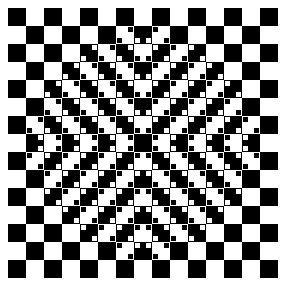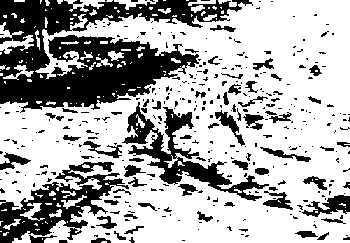" Thus, only when we have lost sight of way-making is there excellence, Only when we have lost sight of excellence is there authoritative conduct, Only when we have lost sight of authoritative conduct is there appropriateness, And only when we have lost sight of appropriateness is there ritual propriety.
As for ritual propriety, it is the thinnest veneer of doing one’s best and making good on one’s word,
And it is the first sign of trouble. “Foreknowledge” is tinsel decorating the way, And is the first sign of ignorance. It is for this reason that persons of consequence: Set store by the substance rather than the veneer And by the fruit rather than the flower. Hence, eschewing one they take the other."In the Ni-family Tai Chi style that I teach there are 108 postures that can be divided into two sections - a 58 movement 'Yin' section and a 50 movement 'Yang' section. Each posture is associated with both a common name and an underlying poetic meaning. Many of the posture meanings come from the Taoist classic 'The Tao Te Ching', and are paradoxical in nature. This is especially true of the postures that comprise the early part of the 'Yin' section. A key theme is that things may not be as they seem to be on superficial observation.
Ames, Roger; Hall, David (2010-05-12). Dao De Jing: A Philosophical Translation (Kindle Locations 755-759). Random House Publishing Group. Kindle Edition.
For example early in the form there are postures with meanings such as, 'Exposition of the Mystery', 'The Great Straightness seems Crooked', 'The Great Fullness Seems Empty, 'Empty and yet Productive', 'Great Skill Seems Clumsy', and 'To be Curled is to be Straight'.
We know from physics that there are levels of reality that are quite different from what we perceive on a surface level inspection. Chairs seem to be solid objects, and they are at one level of perception. Wooden chairs however are made of cells, which are made of molecules, which are made of atoms. Atoms are mostly space with a nucleus in scale the size of a golf ball within the empty space the size of a football stadium. We call the electrons that orbit the nucleus 'particles', but they are more accurately points in space that are a special case of the electron field. Similarly the protons in the nucleus are made of different types of 'quarks'. Most of the mass in protons comes from the forces ( 'gluons' ) that hold quarks together, and like an electron each quark is just a special case of it's respective quark field. Fundamentally it could be said there no 'things', just relations between fields.
In order to navigate the world we need shortcuts. It is not possible to conceive of all the relational interactions that underlie our perceptions. Thus we have developed heuristics that bias the way we perceive 'things'. These heuristics are generally useful, but can sometimes mislead us. Visuals illusions can point this out. This web site presents many interesting examples with dynamic visuals. Here are a few basic examples, but I recommend visiting the site the see the full effects.
The Great Straightness Seems Crooked? All the lines are actually parallel and each square equal.
 |
| Copyright A.Kitaoka 1998 |
The Great Fullness seems Empty? The triangle that appears on top is not drawn.
 |
| Kanizsa’s Triangle |
Another interesting one - Squares 'A' & 'B' actually exhibit the same degree of brightness.
 |
| Adelson’s “Checker-shadow illusion”. ©1995, Edward H. Adelson |
Also - The two tabletops are the same dimensions.
| Shepard’s “Turning the Tables". Shepard RN (1981) Psychological Complementarity |
Shepard RN (1981)
Shepard RN (1981)
Shepard RN (1981) Psychological complementarity
Shepard RN (1981) Psychological complementarity
Shepard RN (1981) Psychological complementarity.
|
Sometimes expectations can be useful:
 |
| www.MichaelBach.de 2004 |
It would be hard to see the "Dalmation dog" in the figure above if you were not looking for it.
The downside is that our expectations sometimes lead us to see things that are not there. I think we also often miss the beauty of things when they occur in context that departs from our expectations. An elegant example of missing beauty out of context is demonstrated from a recent incognito performance depicted in this video, and in this must read article. As documented the celebrated violinist Joshua Bell performed for free on a 3.5 million dollar violin, yet was mostly ignored by those passing by who were too preoccupied to pay much notice. From the article:
"Watching the video weeks later, Bell finds himself mystified by one thing only. He understands why he's not drawing a crowd, in the rush of a morning workday. But: "I'm surprised at the number of people who don't pay attention at all, as if I'm invisible. Because, you know what? I'm makin' a lot of noise!"Another very interesting example of the strange ways that our expectations impact our conceptions of authenticity can be found in the ethically questionable, yet nevertheless interesting and informative documentary by Vikram Ghandi. The name of the documentary is Kumaré, and this article by Erik Davis describes it nicely.As Davis details:
He is. You don't need to know music at all to appreciate the simple fact that there's a guy there, playing a violin that's throwing out a whole bucket of sound; at times, Bell's bowing is so intricate that you seem to be hearing two instruments playing in harmony. So those head-forward, quick-stepping passersby are a remarkable phenomenon"
"Gandhi (his real name) was born in New Jersey and is an alumnus of Columbia University. But in the film he impersonates a long-haired, orange-robed, heavily accented Hindu guru called Sri Kumaré for months on end, gathering a small New Age flock that then witnesses its teacher’s shocking ‘Great Unveiling’ at the close of the film. Gandhi’s experiment is essentially a cruel sceptic’s prank, designed to expose the exotic projections and gullible fantasies animating today’s spiritual seekers."Prior to his unveiling Gandhi has one primary message for his followers; he is not to be seen as a guru but as an illusion. The true guru is to be found within oneself. This presents an interesting paradox. As Davis puts it:
"Whereas many yogis and other spiritual teachers are arguably more ‘authentic’ in their presence and practice than in their often clichéd rhetoric, Kumaré is most truthful when proclaiming his own status as an illusion. Earnest spiritual teachers, even flawed ones, also want to wake up their students, whereas the awakening of Kumaré’s students to the truth of his illusion becomes, for Gandhi, something of a problem."
Gandhi is being truthful when he proclaims Kumaré’s guru image an illusion. His followers see this as a great insight, but the insight remains linked to Kumaré’ image as a guru. Does the insight change when Gandhi reveals his deception? Does the revelation render the insight his followers experienced to be more or less authentic?
Yet another example is illustrated in this study, that details the effect that price has on the taste experiance of wine. The study assigned price labels to bottles of wine. The bottles of wine were identical but the price labels ranged from 10 to 90 dollars. Particpants were asked to rate the wines (which they thought were different ) and they also had thier brain activity captured by FMRI while doing the tasting. As expected the participants preferred the wine when a more expensive label was attached to the bottle. Interestingly the FMRI results indicated that this was not a simple cognitive bias preference, but that the particpants actually experienced more pleasure when sipping the same wine with a higher price tag.
The questions relate closely to placebo effects which I plan to post on at some point with reference to the work of Ted Kapchuk.